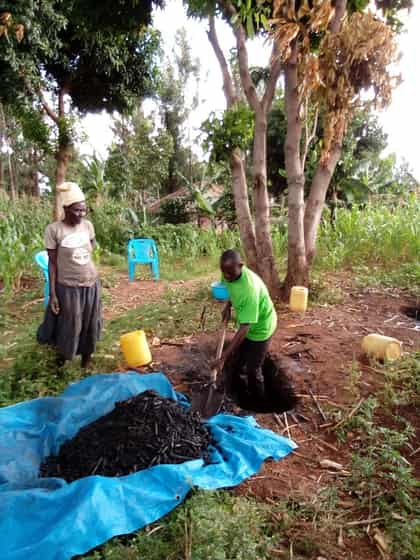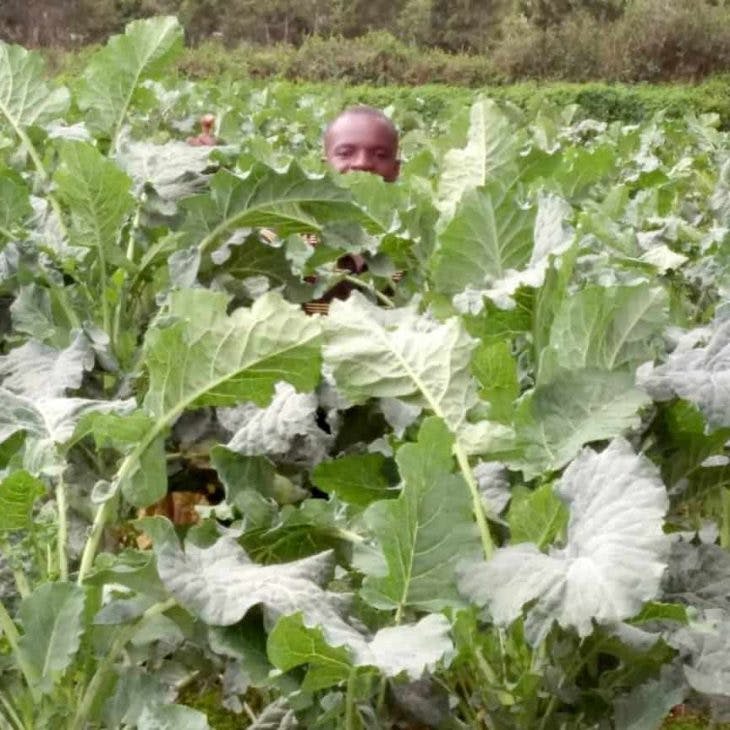Chiang Mai suffers from two primary scourges: haze and social inequality. Are they connected? Yes. Must they be? No. Both the haze and social inequality that afflict the North can be dealt with in a single largely costless – indeed, profitable – way: empower the North’s millions of marginal smallholders to make biochar and sell the resulting carbon removal credits.
Every year the haze blankets us; mind you, this year was exceptional. Here in Chiang Mai City, the source is mainly forest fires; elsewhere the cause is crop waste burning (largely corn). Unfortunately, to date, city folks concerned mainly over their own environment have led discussions of haze UNCONCERNED ABOUT THE REST OF THE NORTH. Out there, it is the poor who suffer and the poor who cause the problem. Why? More than one half of our population are farmers of whom at least 40 percent live below the Thai poverty line (National Statistical Office). These farmers cannot afford the tractors, rakes and bailers required to deal with agricultural waste (78.2 percent of the total corn crop they produce is waste). Without an alternative, they burn to prepare their fields for the next crop. Those of us in the valleys suffer; the farmers suffer more.

What to do?
Warm Heart has long favoured and been actively involved in teaching poor farmers to make biochar from their crop wastes which they can then sell as carbon removal credits.

Kenyans using a trench to make char from corn stalk
What’s biochar? Who cares?
Biochar is essentially super charcoal. It is made by heating any biomass (in our case, crop waste or branches pruned from orchard trees, etc.) TO a very hot temperature (500ᴼ to 650ᴼ C as opposed to 300ᴼ C for normal charcoal). This process requires no costly equipment, produces no haze emissions and emits very limited greenhouse gases (GHG). The process results in a pile of biochar equal to 40 percent of the carbon originally taken in by the plant through photosynthesis. Making biochar is, therefore, a carbon negative exercise as it actually removes CO2 from the air. Because Thailand is doing so little to reduce its carbon footprint, large scale biochar production from crop waste – as a replacement to open field burning – would be of great national importance. Besides cutting GHGs, the elimination of smoke from crop waste burning will eliminate a large portion of the haze suffered annually in the North, reduce hospitality industry costs by 12 billion baht a month for the three months of the smoke season, save thousands of lives, cut hospital admissions and reduce healthcare costs.

it works!
What about social inequality?
Our poor are farmers, and many are broke. There being no real alternative to their current situation. it is hard and hot work cutting, bundling and burning corn stalk. Never mind the added Labour of having to turn the waste into biochar. Releasing haze and pollution into the air, this practice not only creates hazardous air levels for the region, but the poor farmers are actually destroying one of their few resources. Why? Because biochar is a powerful aid to agriculture. Biochar reduces the acidity of the soil while also making it more porous allowing it to retain more water (important in the face of what may be a decade of drought heading this way), improves soil fertility and when applied properly with manure or compost, provides much needed organic matter and revitalizes the soil. This all mean greater yields at no cost. (Note, free, proper biochar fertilizer works as well as NPK – which has quadrupled in cost with the Russian invasion of the Ukraine.)
But what the poor need is money!
True, our standard definition of poverty is lack of money. Today, however, there are ways for farmers to not only improve climate change resilience and yields, but they can also make money. How? The West has finally woken up to climate change and is taking the IPCC’s recommendation that we must not only reduce carbon emissions but also remove carbon from the over-stuffed atmosphere. As a result, the value of certificates for the sequestration of atmospheric CO2 has shot up. Biochar is 80 percent immobile carbon. Use a unit of biochar in your field and sequester two units of CO2. Who will pay? Warm Heart, rechristened as Biochar.Life PLC, will buy sequestered CO2 for $75 per tonne. (Biochar.Life was the first organization in the world accredited to certify the biochar production of “artisan farmers.”)
Why talk about this now?
Biochar is no where to be found in Thailand. In Africa, where we also work, we have paid more than $56,000 to the poorest farmers of Malawi and western Kenya, approximately $175 per farmer. ($175 equals almost 6,000 Thai Baht, the equivalent of one half the annual earnings of a rural, northern, farm household (3.9 people). (NSO). Think of the possibilities here in the North. We grow more than 60 percent of Thailand’s 5.5 million tonnes of corn kernel – and 3.3 million tonnes of waste. Today, farmers burn almost 50 percent of this (estimates run up to 90 percent). If farmers converted even 25 percent of the waste burned (12.5 percent of total waste or 412,500 tonnes) into biochar (assuming a 20% efficiency), they could eliminate almost 82.5 tonnes of PM2.5, the killer component of haze. (Lest this sound like just a bit, remember that 1 tonne of waste generates 6.26 kg of PM2.5 such that 82.5 tonnes of biochar equals more than 500,000 kg of PM2.5. A single kg of PM2.5 equals the smoke from 71,429 cigarettes. Removing the haze from 82.5 tonnes of corn waste would remove the equivalent of the smoke from almost 6,000,000 cigarettes from our air and would pay more than $6,000 into the rural economy.
So, again, what to do?
Train the poor, small farmers of the North to make biochar and to sell the credits they earn for sequestering CO2 to Biochar.Life. Offered the opportunity, it is hard to imagine that such a solution would not grow to include more farmers by itself – and at no cost to the government!
For more information, visit www.warmheartworldwide.org or www.biochar.life.
